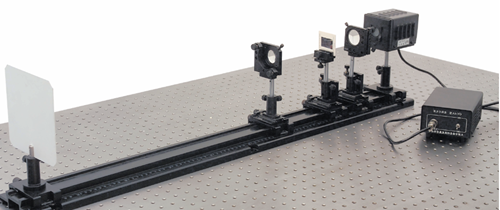
Setup of constructing a slide projector
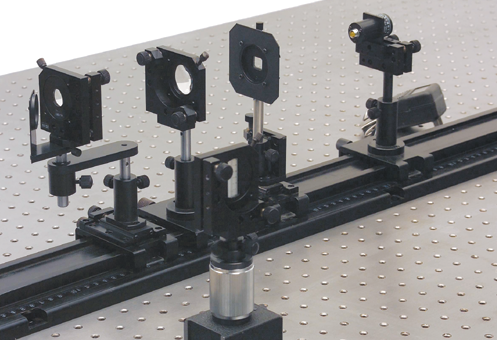
Setup of constructing a microscope
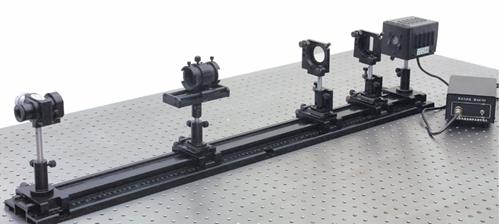
Setup of determining the nodal locations & the focal length of a lens-group
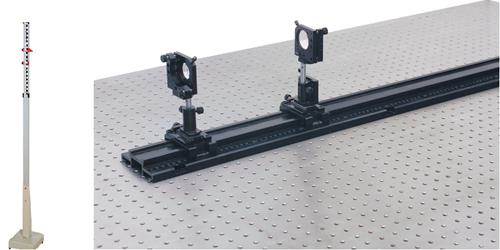
Setup of constructing a telescope
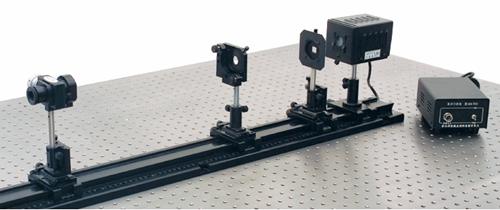
Setup of measuring the focal length of an eyepiece
Note: stainless steel optical table or breadboard not provided
Features
Easy operation
9 experiment examples
Complete solution
Detailed instructional manual
Introduction
The LEOK-4 Geometrical Optics Experiment Kit is designed to provide students with hands-on experience in the fundamental principles of geometrical optics. The kit includes a comprehensive set of optical and mechanical components, along with light sources that can be easily assembled into various experimental setups. It is designed to help students explore core concepts of geometrical optics, such as lens measurement, magnification, and optical imaging.
The instruction manual included with the kit provides detailed experimental setups, principles, procedures, and the required parts for each experiment. This allows students to build and conduct a variety of experiments that enhance their problem-solving abilities and experimental skills. Please click to view some sample pages of the instruction manual.
Using this kit, the following experiments can be conducted:
1. Measurement of the focal length of a convex lens based on self-collimation
2. Measurement of the focal length of a convex lens based on Bessel method
3. Measurement of the focal length of a convex lens based on lens imaging equation
4. Measurement of the focal length of a concave lens
5. Measurement of the focal length of an eyepiece
6. Measurement of the nodal locations and the focal length of a lens-group
7. Measurement of the magnification of a microscope
8. Measurement of the magnification of a telescope
9. Construction of a slide projector
The LEOK-4 Geometrical Optics Experiment Kit is a powerful tool for exploring core concepts of geometrical optics in an educational setting. By allowing students to perform experiments related to lens measurement, magnification, and optical imaging, the kit helps them gain practical experience and deepen their understanding of the behavior of light. It is an essential resource for students pursuing studies in physics, optics, and engineering.
Part List
| Description | Specs/Part No. | Qty |
| Optical rail | 1 m; aluminum | 1 |
| Carrier | General | 2 |
| Carrier | X-translation | 2 |
| Carrier | X-Z translation | 1 |
| Bromine-Tungsten lamp | LLC-3 (12 V/30 W, variable) | 1 set |
| Two-axis mirror holder | SZ-07 | 1 |
| Lens holder | SZ-08 | 2 |
| Adaptor piece | SZ-09A | 1 |
| Lens group holder | SZ-28 | 1 |
| Direct reading microscope | 1 | |
| Eyepiece holder | SZ-36 | 1 |
| Plate holder | SZ-12 | 1 |
| White screen | SZ-13 | 1 |
| Object screen | SZ-14 | 1 |
| Standing ruler | SZ-33 | 1 |
| Reticle | 1/10 mm | 1 |
| Millimeter | 30 mm | 1 |
| Biprism holder | SZ-41 | 1 |
| Lenses | f = 45, 50, 100, -100, 150, 190 mm | 1 each |
| Plane mirror | dia 36 × 4 mm | 1 |
| 45° glass holder | SZ-45 | 1 |
| Eyepiece (doublet lens) | f = 34 mm | 1 |
| Slide show | 1 | |
Small illumination lamp | with 3V DC adapter | 1 |
| Magnetic base | with holder | 1 |

Setup of constructing a slide projector

Setup of constructing a microscope

Setup of determining the nodal locations & the focal length of a lens-group

Setup of constructing a telescope

Setup of measuring the focal length of an eyepiece